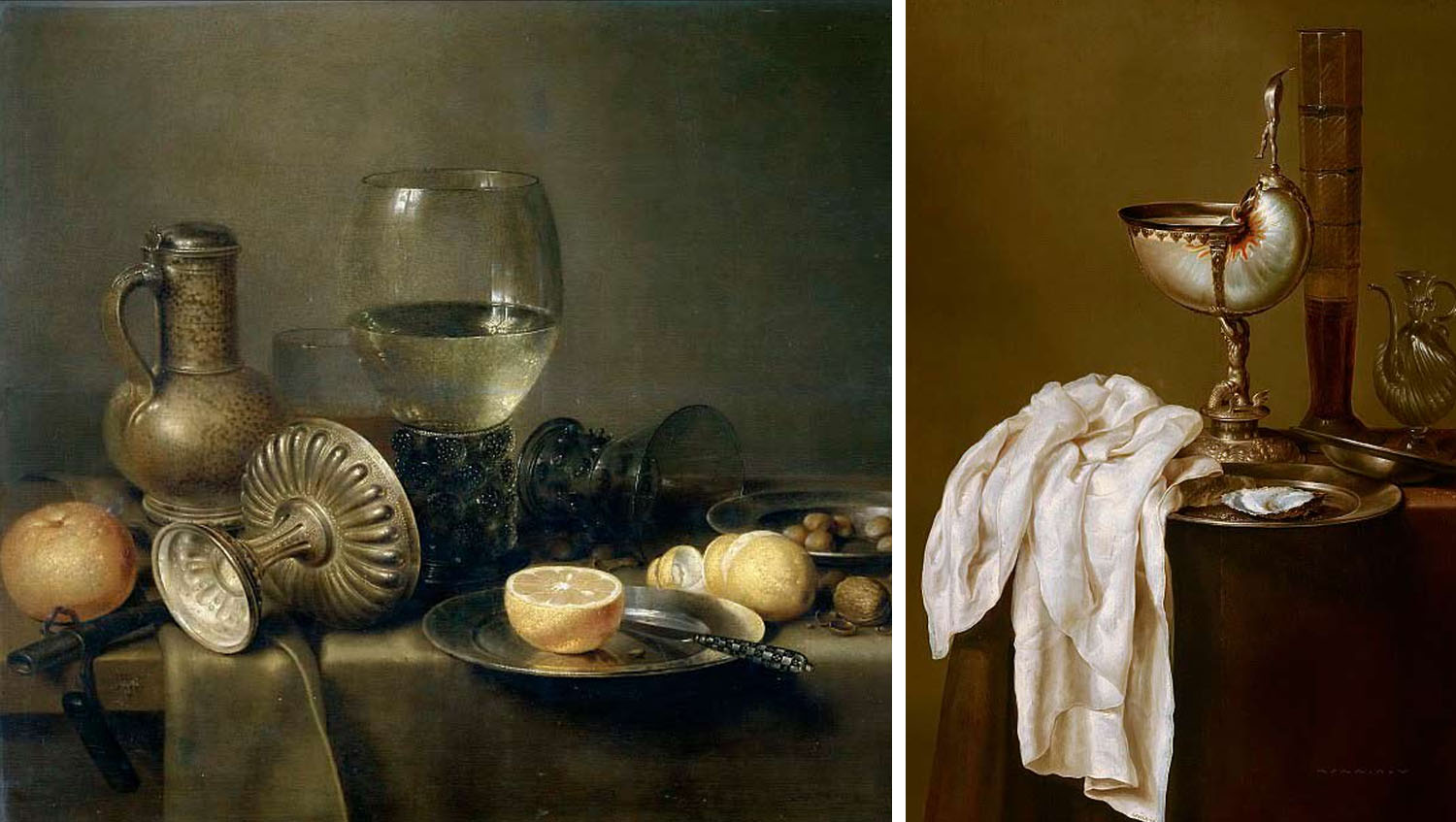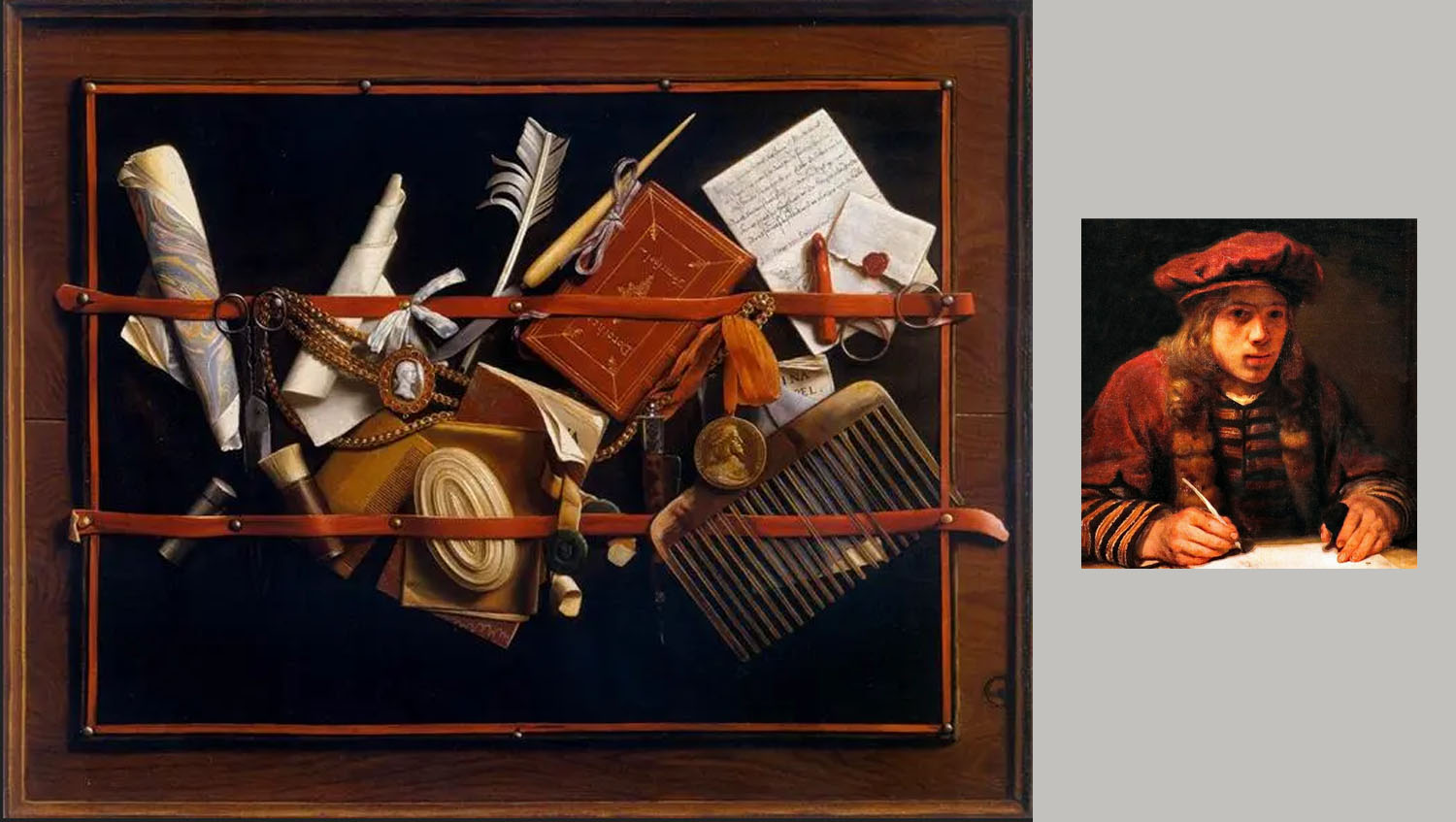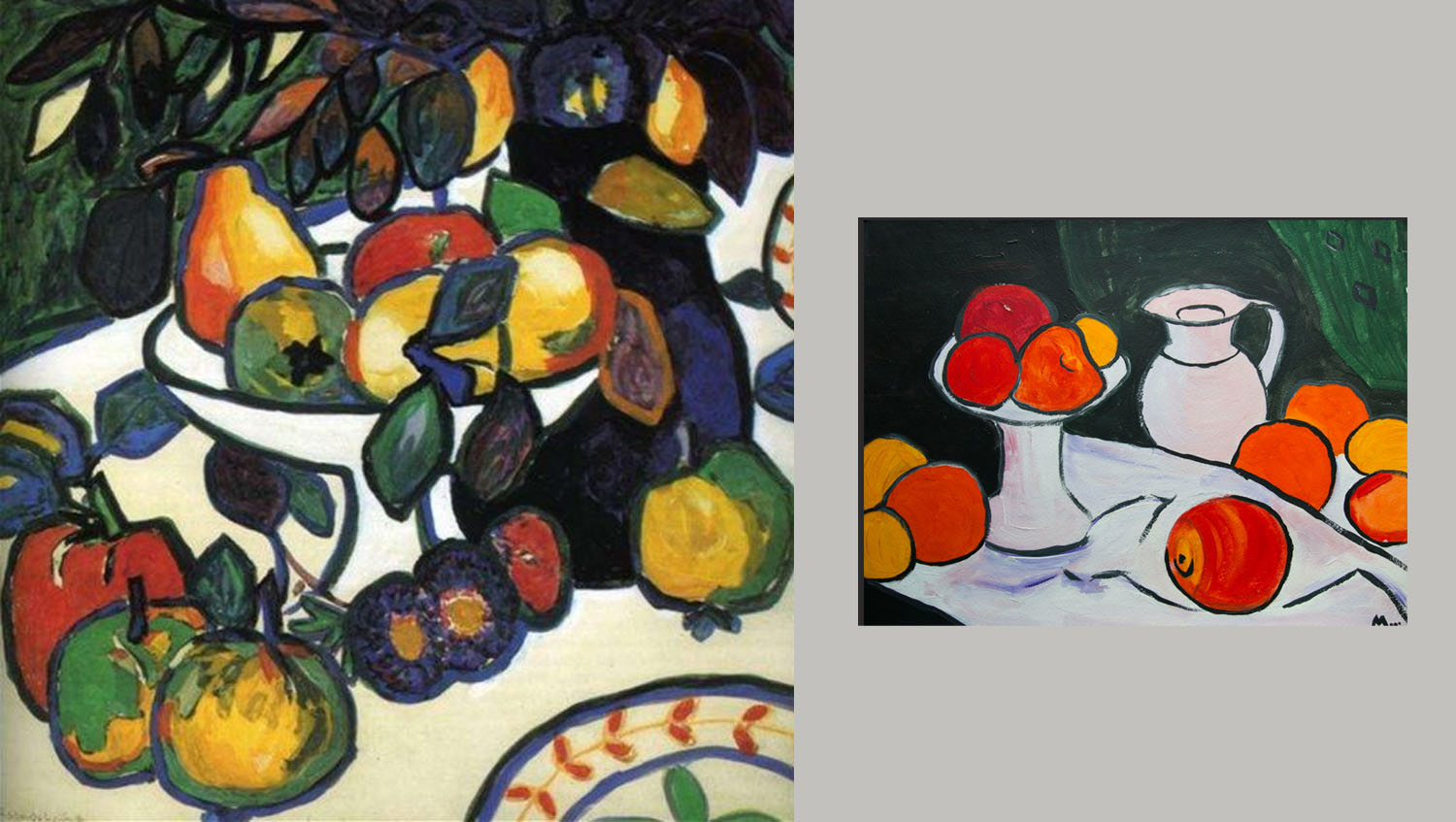
Still life art is one of the most popular genres of painting. It is an image of stationary objects such as fruits, vegetables, flowers, dishes and other objects. Still life can be done with a variety of techniques and materials, including oil, watercolor, graphics and even photography.
The genre of still life arose in Western painting in the 17th century. It presents an image of stationary objects such as fruits, vegetables, flowers or household items — vases, cups, glasses and others.
In this article, we will consider:
Dutch still life
The legacy of the Renaissance was continued by the so-called «Small Dutch.»
Their paintings mostly reflected scenes of everyday life, yet contained hidden symbols of religion and philosophy. Their painting was accessible and understandable to the audience, maintaining its «home» character.
Still life in Dutch painting of the 17th century was represented by many varieties: «floral,» «fish,» «fruit,» «kitchen,» «luxurious,» «breakfast,» «bustle of suet,» etc. The most popular is still life with fruit.
His popularity was explained by the fact that this genre reflected the cult of private life that was inherent in Dutch burghers.
Peter Klas

Notable Dutch Golden Age artists include Peter Klas,
who specialized in depicting fruit compositions, including still lifes with fruits and vegetables. His works were distinguished by a bright color scheme and simplicity of composition.
Pictured: «Still Life with Musical Instruments,» 1623
The artist expressed all 5 feelings in the still life. The turtle symbolizes touch. The tube and snuff box are a sense of smell. Food and drink — taste. The mirror symbolizes vision. And the musical instruments that you see in the picture are an allegory of hearing.
Willem Klass Head

Willem Klass Heda was one more famous master of a genre. He created still lifes with fruit, vegetables and household items, transferring wealth and a variety of natural materials in the works. The unsurpassed master of drawing of glass objects in a still life.
On a photo of his picture: «A still life with a jug of beer and orange» and «A still life with a bowl from a nautilus»
Willem Clough

Willem Calf also holds an honorable place among Dutch still life masters. His paintings are virtuoso depictions of details and textures. He was always interested in conveying the game of light and light effects on various materials.
Willem Clough is also known for spectacular still lifes with precious dishes and exotic fruits, and modest in size and motives paintings depicting poor kitchens and backyard.
In the photo of his still lifes with oil: «Still life with a Chinese soup,» «Still life with a silver bowl.»
The painting «Still Life with a Silver Bowl» is a typical example of a Dutch still life of the time. The canvas depicts an ornate silver bowl located on a cloth table. A variety of objects such as fruits, flowers, eggs and musical instruments are visible around the bowl.
Objects in still life have symbolic meaning. A bowl made of precious material is wealth and luxury. Fruits and flowers — fertility and short life. Eggs, as a symbol of new life and rebirth, add depth to the product’s meanings. Musical instruments in the background indicate enjoyment of music that was considered high art at the time.
The artist Willem Calf was known for his «thin oil layer» technique, which he applied to achieve special smoothness and glare on objects.
Still lifes «Deceptions»
Some artists in the works used art of a still life for creation of very realistic illusions — effect of deception of an eye.
Samuel van Hoogstraten

was one of these masters. He created still lifes, which at first glance seemed not a painting, but real objects.
The artist painted the famous «Nayutrmort-trick» with objects, as if hanging on the wall for everyday use. Comb, book, pen and others.
When the artist showed his art to the high light on August 6, 1651, the emperor, empress, king of Hungary and archbishop were present.
When his work, still life, was shown, the Emperor initially mistook the painted objects for real.
The ruler turned out to be deceived and said about it: «This is the first artist who deceived me.» And then he informed Samuel Hoogstraten that as punishment for this deception he would not return the still life to the artist, as he wanted to keep it forever and cherish it.
In return, Emperor Ferdinand III offered the artist a gold medal with his portrait and chain. These award items would subsequently appear in almost all of van Hoogstraten’s paintings, as a reminder of the royal seal of approval once received.
Cornelis Norbertus Geisbrecht

also known for his still-life deceptions. He created paintings in which he depicted objects as if they fell out of the picture, creating the impression of volume and depth.
In the photo: still lifes with oil «Deception Book of Drawings» and «Back of the picture in the frame»
Still Lifes of Other Countries and Eras
Caravaggio

The art of still life was popular in other countries and eras as well. For example, the Italian Baroque artist Caravaggio became famous for his realistic still lifes, including fruits, flowers and household items.
Consider his painting «Fruit Basket.»
The plot is still life. A fruit basket occupies the bottom of the picture and is placed on the clearly marked edge of an invisible table. The background is pale, light, outstretched, with no detail. A wicker basket filled with ripe, partially rotten fruits seems to protrude a little from the frame of the picture. The artist specially painted an apple with wormholes. This is a reference to the Bible Book of Amos. The presence of healthy and worm fruits next to each other is an allegory of the Church, which collects both sinners and saints.
Also in the basket, Caravaggio depicted peaches, pears, quince and different color grape clusters.
Paul Cézanne

The postimpressionist French artist Paul Cezanne also made the significant contribution to a still life genre. He used in a still life with fruit bright colors and geometrical forms to transfer the impressions of the world around.
Cezanne believed that forms of the nature and art form eventually organic unity. He decided to be released in the still lifes and landscapes from external prettiness, superficial credibility and the «sight uslazhdeniye» function for the sake of «the internal truth».
On a photo still life Fruit oil of work of Paul Cezanne.
Claude Monet

The French artist Claude Monet who became osnovayely style of impressionism, and gave the name to this direction of painting. He painted a picture with the Sunrise in the port of Le Havre where the feeling, rising paints was very brightly transferred, and the attention of specification was to a lesser extent given.
The impression of a picture but not reality became primary, the name of the Impressionism style from here – impression «impression».
First of all, the Impressionists abandoned the contour, replacing it with small separate and contrasting strokes. They applied them in a special way, in accordance with the theory of color.
Two placed on the canvas without a mixture, side by side, contart paints from the following list strengthen each other. And, on the contrary, if they are mixed, it will no longer be so bright and the colors will lose intensity.
Orange — blue, Red — green, yellow — purple.
In the photo: Still life of Claude Monet: «Chrysanthemums.» Here the flower petals are written in small strokes, and if you look closely, each flower is unique.
Still lifes of Kazimir Malevich

Avant-garde artist Kazimir Malevich is best known for his painting «Black Square,» and is the founder of the Suprematism direction.
In Malevich’s works, the art of still life receives an avant-garde sound. Objects become more planar, geometric and gravitate not to naturalism but to abstraction.
One of the features of Kazimir Malevich’s painting technique was the layering of paints. One on top of the other to get the color spot the artist needs.
For example, to get a dark red hue, Malevich put two colorful layers on the canvas — black from below and red from above. Light, penetrating through these colorful layers, is seen by the viewer not just red, but with a dark tint.
In the photo: still lifes with fruits.
Beautiful still lifes for your interior

Pictures with fruit and other objects, still lifes oil on a canvas are a fine addition to an interior and the living room, and kitchens.
On our website you can get author’s still lifes of the professional artist Nadezhda Tsvetkova, the participant of the Russian and international exhibitions.
On a photo: «A still life with a hookah in east style» on a canvas, magnificent east fairy tale with ripe grapes and persimmon.




